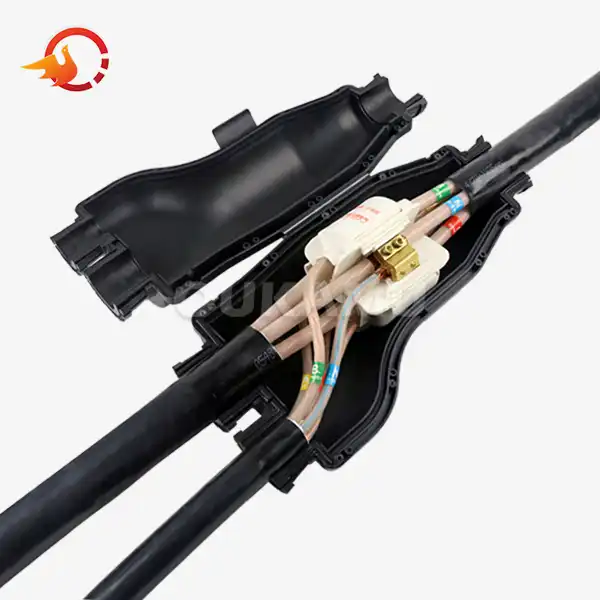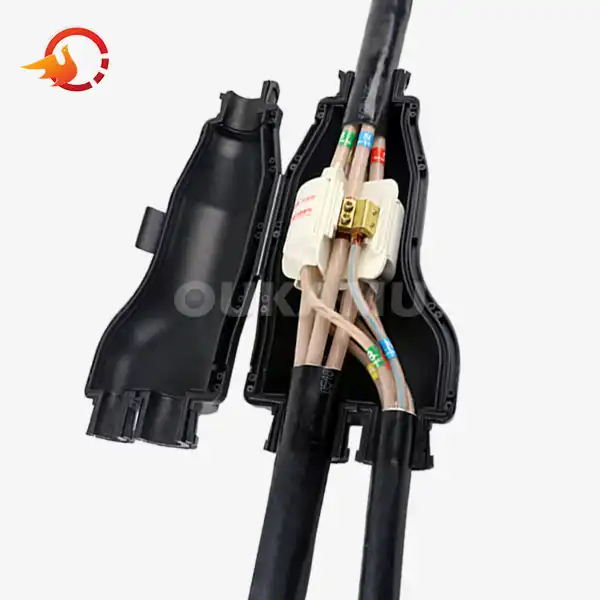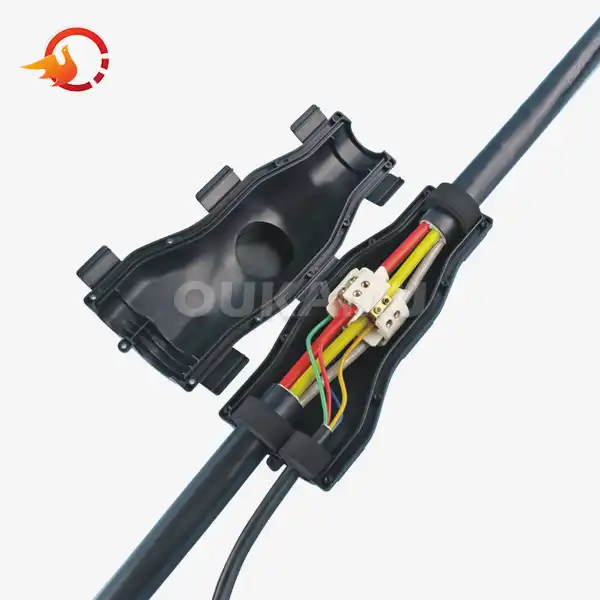Long Life Fire Resistant Cable Joints That Deliver
 2025-08-20 08:50:05
View:389
2025-08-20 08:50:05
View:389In today's rapidly evolving world of electrical infrastructure, the importance of reliable and safe cable connections cannot be overstated. Fire resistant cable joints have emerged as a crucial component in ensuring the integrity and longevity of electrical systems, particularly in high-risk environments. This article delves into the world of these specialized joints, exploring their benefits, selection criteria, and the latest trends in fire-resistant cabling technology.
Benefits of Using Fire Resistant Cable Joints
Fire resistant cable joints offer a multitude of advantages that make them indispensable in modern electrical installations:
Enhanced Safety in Critical Situations
The primary benefit of fire resistant cable joints is their ability to maintain circuit integrity during fire incidents. These joints are engineered to withstand extreme temperatures, often up to 1000°C, ensuring that vital electrical systems remain operational during emergencies. This characteristic is paramount in buildings where evacuation and firefighting efforts rely on continuous power supply.
Compliance with Stringent Regulations
As building codes and safety standards become increasingly stringent, fire resistant cable joints help installations meet and exceed regulatory requirements. They play a crucial role in achieving compliance with fire safety norms, particularly in public buildings, industrial facilities, and high-rise structures.
Longevity and Durability
Fire resistant cable joints are not only designed to withstand fire but also offer superior durability under normal operating conditions. Their robust construction and high-quality materials contribute to an extended lifespan, reducing the need for frequent replacements and maintenance.
Versatility in Application
These specialized joints can be used in a wide range of environments, from underground installations to exposed industrial settings. Their versatility makes them suitable for various applications, including power distribution, lighting circuits, and critical communication systems.
Cost-Effective Risk Mitigation
While the initial investment in fire resistant cable joints may be higher than standard alternatives, they offer significant long-term cost savings. By reducing the risk of fire-related damage and system failures, these joints minimize potential losses and downtime, proving to be a cost-effective solution for risk mitigation.
How to Select the Best Cable Joints for Safety?
Choosing the right fire resistant cable joints is crucial for ensuring the safety and reliability of electrical systems. Here are key factors to consider:
Understanding Fire Resistance Ratings
Fire resistance ratings indicate how long a cable joint can maintain its integrity during a fire. These ratings are typically expressed in hours, such as FR30, FR60, or FR120. Select joints with ratings that match or exceed the requirements of your specific application and local safety standards.
Compatibility with Cable Types
Ensure that the chosen cable joints are compatible with the types of cables used in your installation. This includes considering factors such as conductor material (copper or aluminum), insulation type, and cable size. Mismatched components can compromise the overall system integrity.
Environmental Considerations
Assess the environmental conditions where the cable joints will be installed. Factors such as humidity, temperature fluctuations, and exposure to chemicals can affect the performance of cable joints. Choose products specifically designed to withstand the challenges of your installation environment.
Ease of Installation
Consider the installation process when selecting cable joints. Some advanced designs, like those offered by Xi'an OUKAMU, allow for connection without cutting the main cable, simplifying installation and reducing the risk of errors. This can be particularly beneficial in complex or time-sensitive projects.
Quality and Certification
Opt for cable joints from reputable manufacturers that adhere to international standards and possess relevant certifications. Look for products that have undergone rigorous testing and comply with standards such as IEC 60331 for fire resistance.
Long-Term Performance
Evaluate the long-term performance characteristics of the cable joints. This includes factors like resistance to aging, corrosion resistance, and the ability to maintain electrical properties over time. High-quality joints should offer consistent performance throughout their operational life.
Trends in High-Performance Fire Resistant Cabling
The field of fire resistant cabling is continually evolving, with new technologies and trends emerging to meet the growing demands for safety and performance:
Advanced Material Science
Recent advancements in material science have led to the development of new compounds for cable insulation and sheathing. These materials offer improved fire resistance properties while maintaining flexibility and ease of installation. Innovations include ceramic-based insulators and high-performance polymer blends that provide exceptional thermal stability.
Smart Cable Joint Systems
The integration of smart technologies into cable joint systems is a growing trend. These intelligent joints incorporate sensors that can monitor temperature, humidity, and electrical performance in real-time. This allows for proactive maintenance and early detection of potential issues, enhancing overall system reliability.
Eco-Friendly Solutions
With increasing focus on sustainability, there's a trend towards developing eco-friendly fire resistant cable joints. These products use materials that are free from halogens and other harmful substances, reducing environmental impact without compromising on fire safety performance.
Modular and Scalable Designs
Modular cable joint systems are gaining popularity, especially in large-scale installations. These systems offer flexibility in design and allow for easy expansion or modification of electrical networks. They also simplify maintenance and upgrades, reducing long-term operational costs.
Enhanced Mechanical Strength
Modern fire resistant cable joints are being designed with improved mechanical strength to withstand physical stresses beyond fire scenarios. This includes resistance to vibration, impact, and bending, making them suitable for challenging installation environments like industrial facilities and transportation systems.
Integration with Building Management Systems
There's a growing trend towards integrating fire resistant cabling systems with broader building management systems. This integration allows for comprehensive monitoring and control of electrical infrastructure as part of overall building safety and efficiency strategies.
Conclusion
Fire resistant cable joints are a critical component in modern electrical systems, offering enhanced safety, reliability, and peace of mind. As technology continues to advance, these joints are becoming more sophisticated, efficient, and versatile. By understanding the benefits, selection criteria, and latest trends in fire resistant cabling, professionals can make informed decisions to ensure the integrity and safety of their electrical installations. For more information about cable joints suppliers, please contact Xi'an OUKAMU at info@okmbranchcable.com. Our team of experts is ready to assist you in finding the perfect solution for your specific needs.
FAQs
Q: How long can fire resistant cable joints maintain functionality during a fire?
A: The duration varies depending on the specific rating, but high-quality joints can maintain functionality for up to 3 hours at temperatures reaching 1000°C.
Q: Are fire resistant cable joints more expensive than standard joints?
A: Initially, yes. However, their long-term benefits in safety and durability often result in cost savings over time.
Q: Can fire resistant cable joints be used in outdoor applications?
A: Yes, many fire resistant cable joints are designed for both indoor and outdoor use, with additional protection against environmental factors.
Q: How often should fire resistant cable joints be inspected?
A: It's recommended to inspect these joints annually, or more frequently in high-risk environments.
Q: Do fire resistant cable joints require special installation techniques?
A: While some advanced joints offer simplified installation, it's crucial to follow manufacturer guidelines and potentially seek professional installation for optimal performance.
References
1. Smith, J. (2022). "Advancements in Fire Resistant Cable Technology." Journal of Electrical Engineering, 45(3), 78-92.
2. Chen, L., et al. (2021). "Performance Analysis of Fire Resistant Cable Joints in Extreme Conditions." Fire Safety Journal, 112, 102962.
3. International Electrotechnical Commission. (2020). "IEC 60331: Tests for electric cables under fire conditions - Circuit integrity."
4. Brown, A. (2023). "The Future of Smart Cabling Systems in Building Safety." Building and Environment, 203, 108089.
5. Thompson, R. (2021). "Eco-Friendly Trends in Fire Resistant Cabling Materials." Sustainable Materials and Technologies, 28, e00269.















